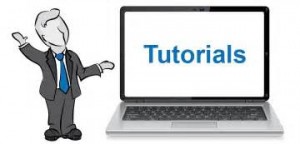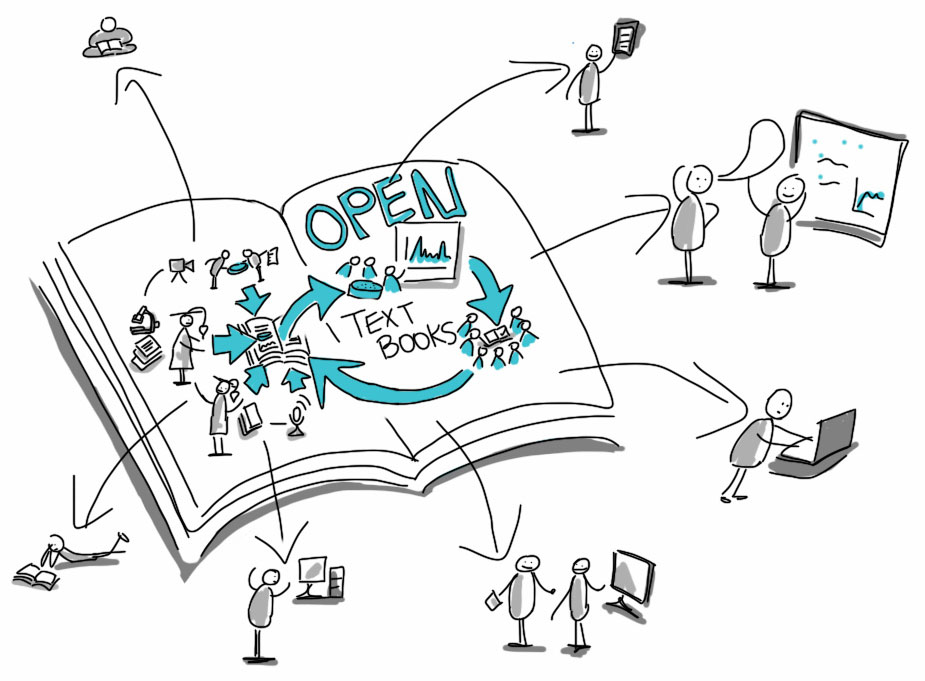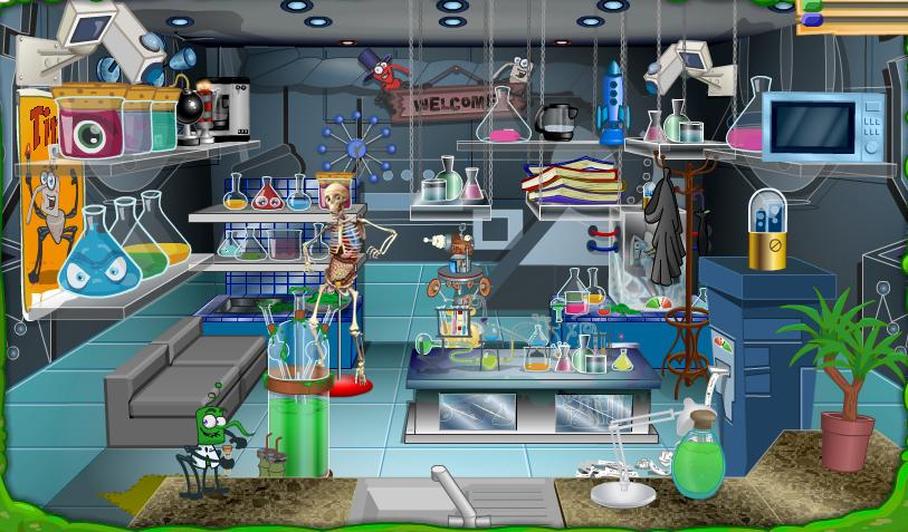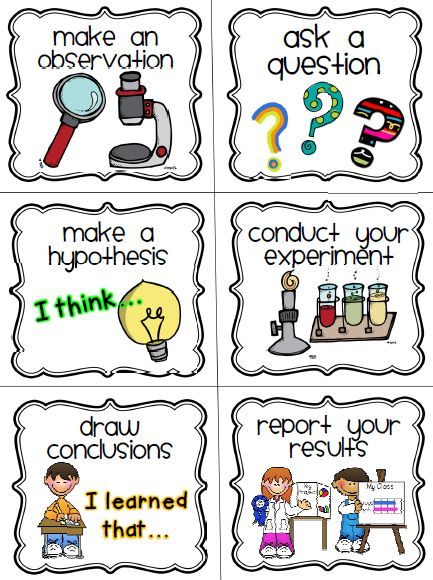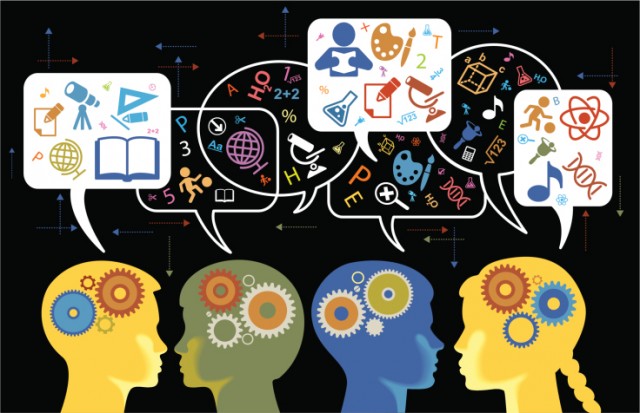Dr. V.K.Maheshwari, M.A (Socio, Phil) B.Sc. M. Ed, Ph.D.
Former Principal, K.L.D.A.V. (P.G) College, Roorkee, India
The lecture strategy is the most widely used form of presentation. A lecture is an oral presentation of information by the teacher. It is the method of relaying factual information which includes principles, concepts, ideas about a given topic. The teacher is very active, doing all the talking. Students on the other hand are very inactive, doing all the listening.
The lecture is defined as the method of instruction in which the instructor has full responsibility for presenting facts and principles orally It is an oral presentation of information by the teacher .
Structuring presentation—
Lecture strategy is generally not suitable for the lower classes. But, this is the method most liked by teachers. Thinking and observation which result from science teaching do not get developed.
Effective presenters provide roadmaps for their speech. They design and present lectures that are well-organized and easy to follow. There’s an “attention grabber” for the opening, a preview of what is ahead and three or four chunks of information that make-up the body of the presentation, and a closing that summarizes important content, information and key messages
Structure your lectures to help students retain the most important material. . Plan your classes so that the main points come at a time when students are most attentive. Structure them to include: Attention-getting introduction Brief overview of main points to be covered Quick statement of background or context Detailed explanation of no more than three major points, the most important first, with a change of pace every ten or fifteen minute Concluding summary of main points to reinforce key themes
Structure the lecture to suit your audience and the subject matter. Consider the difficulty of the material and students’ level of ability as you make decisions about the amount of information to cover, the amount of detail, and the number of examples you present. Structure the lecture to suit your students and the subject matter. Consider the difficulty of the material and students’ level of ability and the entering behavior as you make decisions about the amount of information to cover, Unfamiliar technical words should be introduced cautiously
Focus the message. It is very easy to present too much information, which quickly saturates students, causing them to drop into a passive-listening role. They may understand what is being said, but they are not retaining it. Identify what you most want your students to remember about the topic.Prepare a one-page sketch of the lecture Structure the lecture in outline form and flesh it out with examples and illustrations; identify your key points Specify the main topic or topics. Free associate words, facts, ideas, and questions as they come to you
Provide a logical progression for the material. Provide a logical progression for the material. Some lectures lend themselves to a chronological or sequential approach. At other times, you can move from the general principle to specific instances, build up from the parts to the whole, trace one idea across time or space, describe a problem and then illustrate its solution, Decide what content to cover Organize the topics in a meaningful sequence. Like topical ,Causal ,Sequential, Symbolic or graphic, Problem-solution
Design your lectures in ten- or fifteen-minutes blocks. Each block should cover a single point with examples and end with a brief summary and transition to the next section. If you find yourself running out of time, cut an entire block or shorten the middle section of a block rather than rush the summary.
Budget time for questions. Whether or not you formally open the floor for questions, leave time for students to ask you to repeat material or to supply additional explanations.
Begin and end with a summary statement. Continuity and closure are important: students need to see how each new topic relates to what they have already learned as well as to what they will be learning in the coming weeks. To bring your points home, use different words and examples in your opening and closing summaries.
Experiment with different formats for your lecture notes. Some formats are more suited to certain subjects and disciplines than others for example a tree diagram (such as a flowchart or network) provides a system of pathways through important points with optional stopovers, tangents, useful illustrations, or examples.
Write down vivid examples. . Within the body of your lecture notes or on a separate sheet of paper, copy out all the key facts, quotations, computations, or complex analyses. Clear, straightforward, memorable examples reinforce the points you are trying to make.
Use notes wisely Notes used wisely can ensure accuracy, jog the memory, and dispel the fear of forgetting. They are essential for reporting complicated information. For an instructor who tends to ramble, notes are a must because they help keep the lecture on track.
Prepare your lecture for the ear, not the eye. Oral presentations are very different from written presentations. When students are listening to you speak, they cannot go back and “reread” a troublesome sentence or look up a difficult word in the dictionary.
Rehearse your lecture Carefully prepare your lectures. Thorough preparation can prevent last-minute headaches.. After completing the preliminary planning and writing of the lesson plan, the instructor should rehearse the lecture to build self-confidence. Rehearsals, or dry runs, help smooth out the mechanics of using notes, visual aids, and other instructional devices. A run-through will give you a sense of how comfortable you are with the material and the length of your presentation. To save time, practice only the most difficult sections, the opening and the ending.
Presentation Tips
Minimize nervousness. A certain amount of nervousness is normal, especially right before you begin to speak. To relax yourself, take deep breaths before you begin or tighten and then release the muscles of your body from your toes to your jaw. Once you are under way your nervousness will lessen. Avoid eating a big meal before the lecture. Not only will a full stomach make you drowsy, but it makes it more difficult to move around the room with energy.
• Arrive early to make sure that everything is ready before the first student arrives.
• Make sure all of the media equipment is working.
• Locate and check the lighting and temperature controls.
• Decide where the lecture notes will be placed (e.g., on a lectern, desk, table) when they are not being held.
• Have a glass of water available during the lecture.
• . Look over your lecture notes one last time.
Visit the classroom before the first meeting The size and shape of the lecture room also influence the design and delivery of the lecture.
Notice the instructor’s area, placement of light switches, chalkboards, and other details. Make arrangements for whatever instructional equipment you will need: overhead projector, microphone, slide projector. When you visit the classroom, stand where you will lecture, practice using the equipment, and write on the board. Check whether your board work can be seen from the back of the room. The final logistical consideration is the media equipment available.
Technology-Enhanced Classrooms. Many classrooms are equipped with technology that will help you add other dimensions to your lecture (TECs) allow you to use computer consoles, DVD/VHS players, personal response systems, wireless microphones, and other technologies to enhance your teaching. You can display your teaching files (PowerPoint, sound files, images), and your course site or other websites on an LCD projector.
Delivering a Lecture
Lectures may include several different types of delivery. However, depending on the requirements of any particular circumstances, a lecture is usually delivered in one of four ways: Reading from a typed or written manuscript, Reciting memorized material without the aid of a manuscript, Speaking extemporaneously from an outline, and Speaking impromptu without preparation.
The teaching lecture is probably best delivered in an extemporaneous manner. The instructor speaks from a mental or written outline, but does not read or memorize the material to be presented. Because the exact words to express an idea are spontaneous, the lecture is more personalized than one that is read or spoken from memory.
Learn how not to read your lectures. At its best, lecturing resembles a natural, spontaneous conversation between instructor and student, with each student feeling as though the instructor is speaking to an audience of one. If you read your lectures, however, there will be no dialogue and the lecture will seem formal, stilted, and distant.
Avoid a “cold start.” Go to class a little early and talk informally with students. Make the presentation appear to be interactive, engaging and a discussion. Ask rhetorical questions Survey the audience with powerful trigger questions . Feed forward structuring message; Grab students’ attention with your opening. Open with a provocative question, startling statement, unusual analogy, striking example, personal anecdote, dramatic contrast, powerful quote, short questionnaire, demonstration, or mention of a recent news event.
Begin by writing out the main theme and why students should learn about it. Identify what you most want your students to remember about the topic. Announce the objectives for the class. Tell your students what you expect to accomplish during the class, or list your objectives on the board. Place the day’s lecture in context by linking it to material from earlier session. The purpose should describe in general terms what the students will learn during the lecture.
During class, think about and watch your audience-your students. Focus on your students as if you were talking to a small group. One-on-one eye contact will increase students’ attentiveness and help you observe their facial expressions and physical movements for signs that you are speaking too slowly or too quickly, or need to provide another example. A common mistake lecturers make is to become so absorbed in the material that they fail to notice whether students are paying attention or not.
Vary your delivery to keep students’ attention. Keeping students’ attention is among the most important facets of helping them To extend students’ attention spans Ask questions at strategic points or ask for comments or opinions about the subject.
Make the organization of your lecture explicit. Put an outline on the board before you begin, outline the development of ideas as they occur, or give students a handout of your major points or topics. Outlines help students focus on the progression of the material and also help them take better notes. If their attention does wander, students can more readily catch up with the lecture if they have an outline in front of them.
Convey your own enthusiasm for the material. Think back to what inspired you as an undergraduate or to the reasons you entered the field you are in. Even if you have little interest in a particular topic, try to come up with a new way of looking at it and do what you can to stimulate students’ enthusiasm.
Be conversational. Use conversational inflections and tones, varying your pitch just as you do in ordinary conversation. If you focus on the meaning of what you are saying, you’ll instinctively become more expressive. Choose informal language, and try to be natural and direct. Establish rapport with your students. Warmth and rapport have a positive effect on any audience. Students will feel more engaged in the class if the opening minutes are personal, direct, and conversational.
Use verbal support . A comparison is used to bridge the known and the unknown clarify a new subject idea, or situation by showing how it resembles a familiar subject. Comparison may be factual or imaginary. An example of an imaginary comparison is called an analogy. An analogy uses a story or incident with a point that parallels the point that the communicator wants to make. The analogy does not prove a point, but helps to dramatize it.
Use Statistics and Testimonies Statistics and Testimonies can be used to clarify or amplify a point, but must be used sparingly and wisely. They should be in terms that are easily understood, and unless there is good reason for giving exact statistical figures, round numbers should be used.
Story Telling. Story telling helps make your presentation believable and conveys your human side. Incorporate anecdotes and stories into your lecture. When you are in a storytelling mode, your voice becomes conversational and your face more expressive, and students tend to listen more closely. Use anecdotes to illustrate your key points.
Maintain eye contact with the class. Look directly at your students one at a time to give them a sense that you are speaking to each individual. Look at a student for three to five seconds – a longer glance will make most students uncomfortable. Beware of aimless scanning or swinging your head back and forth.
Use Suitable Language In the teaching lecture, simple rather than complex words should be used whenever possible. Picturesque slang and free-and-easy colloquialisms, if they suit the subject, can add variety and vividness to a teaching lecture. If the subject matter includes technical terms, the instructor should clearly define each one so that no student is in doubt about its meaning. Whenever possible, the instructor should use specific rather than general words.
Unless long sentences are carefully constructed, they are difficult to follow and can easily become tangled. To ensure clarity and variety, the instructor should normally use sentences of short and medium length.
Use concrete, simple, colorful language. Use first-person and second-person pronouns (I, we, you). Choose dramatic adjectives, for example, “vital point” rather than “main point” or “provocative issue” rather than “next issue.” If you need to use technical language, provide definitions or a glossary handout to facilitate communication. In order to facilitate impact and effectiveness of presentations it is important to keep your language clear, concise and compelling.
Use the make me feel important (MMFI) rule to find unique ways to connect with the audience. Create a psychological safe climate; build closeness and openness by using people’s names, nodding your head, looking people in the eye with one thought rather than scanning the room. Laugh at yourself when you make a mistake. If you mispronounce a word or drop your notes, your ability to see the humor of the situation will put everyone at ease. Don’t let your confidence be shaken by minor mistakes.
Vary the pace at which you speak. Students need time to assimilate new information and to take notes, but if you speak too slowly, they may become bored. Try to vary the pace to suit your own style, your message, and your audience. Vary your voice. Consider the pitch, volume, duration of words, intonation, and the intensity of your voice.
Loudness Too soft and the audience cannot hear you. Too loud and they will not want to. Of the two, too loud is preferable, but somewhere in the middle is “just right.”Rate Speaking too fast does not give students time to digest what is being said. Too slow puts them to sleep.
Intonation , Intonation is the range of your voice. Some speakers are monotone, which tends to be boring. On the other hand, some speakers are too histrionic, which tends to become tiresome. Stress and inflection are related to intonation but they are not the same. Stress is how you emphasize an important point or issue, which can be applied by slowing speech, stopping, spelling a word out, repeating a phrase.
Pause. “This is the really important consideration,” and pause again before proceeding. Watch out for vocalized pauses. Try to avoid saying “um,” “well,” “you know,” “OK,” or “so.” Silent pauses are more effective. Pauses are used both to stress a point and to allow students time to think and catch up. A pause can be used to gain attention, for transition to a new event, to give students time to catch up with an illustration, or to take notes.
Don’t plan to lecture for a full period. The average student’s attention span is between ten and twenty minute. After that, students have difficulty concentrating on the speaker. For each lecture, plan to change the pace every fifteen minutes or so to relieve the monotony and recapture students’ interest.
Budget your own time carefully. Teaching a large lecture class takes a great deal of time and energy Set up weekly work schedules for yourself so that you are prepared for the onslaught of midterms and finals. Find ways to scale back other obligations, if you can, so that you have time to deal with the complexities of teaching such courses Keep track of time.
Use Body Gestures Two extremes of gesturing are: none and wild. Gestures and movement convey a sense of comfort with the material. They can be used along with vocal variation to stress the importance of something, or simply to point out an important part of a visual.
Adopt a natural speaking stance. Breathe normally. Normal breathing prevents vocal strain that affects the pitch and quality of your speech. Keep your shoulders relaxed, your neck loose, your eyes fully open, and your jaw relaxed. Balance yourself on both feet with your toes and heels on the ground. Beware of shifting movements or unconscious rocking to and from. Keep your knees slightly relaxed. Shoulders should be down and loose, with elbows cocked, and your hands at waist level.
Use facial expressions to convey emotions. If you appear enthusiastic and eager to tell students what you know they are more likely to be enthusiastic about hearing it. Use your facial features: eyes, eyebrows, forehead, mouth, and jaw to convey enthusiasm, conviction, curiosity, and thoughtfulness
Use Movement to emphasize an important point or to lead into a new topic Two extremes of movement are: clutching the podium and pacing the room. Both are distracting to the communication process. Movement should be a natural flow, from the podium to the board to the audience. Another consideration is your position in the room. Changing location causes the students to refocus their attention, and can keep students alert.
Use movements to hold Students’ attention. A moving object is more compelling than a static one. Occasionally, move about the room. Use deliberate, purposeful, sustained gestures: hold up an object, roll up your sleeves. To invite students’ questions, adopt an open, casual stance. Beware of nervous foot shifting, however, and aimless, distracting gestures.
Use Graphics The biggest problems with graphics are that they are usually too small to read and contain too much material. Keep graphics simple and large. Discuss the graphic in your lecture. A graphic that is not referenced during the lecture is not much help
To aid memory, use visual illustrations during a lecture. Visual illustrations are remembered longer than verbal information, and they can aid the recall of information that is associated with them. Many classrooms are equipped with technology that will help you add other dimensions to your lecture.
The use of real objects can increase attention, particularly if they are passed around the room. Remember to pause, giving students time to look at them.
Use PowerPoint and Slide ware Presentation
Many instructors find PowerPoint useful in enhancing lectures and emphasizing key point to their students. However, misuse and overuse of this software can lead to a room full of bored looks and glassy stares. PowerPoint is a visual medium. Use graphics, pictures, models, and other images instead of bullets to make your point whenever possible. In PowerPoint, less can be more. Think big, bold, and brief. Do not put large amounts of text on the screen. Aim for no more than seven lines per slide and ruthlessly edit so that your bullets contain only the main points.
Develop Listening Skills
To prevent students from sinking into passive listening, also engage students’ active listening skills by interspersing questions throughout your lecture.
Good discussion questions get the students’ attention. Start by asking a question associated with something they should have read – not a recall question, but perhaps one on a controversial topic. Start with a divergent question such as, “What are the criteria for evaluating good teaching?” Write the first answer on the board. Ask for another. When you have ten or so criteria, ask the class which is the single best criteria and why? Who has a different opinion? Do not ask recall questions that have a single correct answer unless you are going to do something with the response. Ask the question, and then call on a student to answer it. If you identify the student first, the rest of the class is off the hook, and they may pay less attention.
Closing the Lecture
Tell them what you told them. Studies have shown that students are thinking about leaving, and assimilation of new information is at its lowest point. Instead, have students jot down the most important thing they learned, or a question they would like answered about the day’s lecture, or have them answer a single question over the lesson material. In the words of Howard Gardner (2000), “In a lecture, less is more.” It is very easy to present too much information, which quickly saturates students, causing them to drop into a passive-listening role.They may understand what is being said, but they are not retaining it
Ask the students for questions. This gives students an opportunity to clarify their understanding of the content. . Several questions which focus on the main points of the content may be used to summarize the content of the lecture. Ensure all answers have been given and offer an outlet to clarify questions that may occur at a later date. Ask for additional questions.
Draw some conclusion for the class. Help students see that a purpose has been served, that something has been gained during the last hour. A well-planned conclusion rounds out the presentation, ties up loose ends, suggests ways for students to follow up on the lecture, and gives students a sense of closure. Use a transparency, slide or flipchart to review the summary points
Finish forcefully. Don’t allow your lecture to trail off or end in midsentence because the period is over, and avoid the last-minute “Oh, I almost forgot. . .” An impressive ending will echo in students’ minds and prompt them to prepare for the next meeting. End with a thought-provoking question or problem; a quotation that sets an essential theme; a summation of the major issue as students now understand it, having had the benefit’ of the lecture just delivered; or a preview of coming attractions. End your lecture with the volume up. Make your voice strong, lift your chin up, keep your eyes facing the audience. Be sure to stay after class for a few minutes to answer students’ questions.
Strengths of Lecture strategy
The advantages of the lecture approach are that it provides a way to communicate a large amount of information to many listeners, maximizes lecturer control and is non-threatening to students.
The lecture offers the opportunity to deliver a great deal of information to a small or large number of learners while using the teacher’s time efficiently. The teacher can help the students to pull information together, understand it better, or organize it in a way that allows the learner to know when he can and can’t use it.
A lecture is a convenient way to instruct large groups. The lecture method provides for the effective use of time and manpower in that the instructor can present many ideas to a large group in a relatively short period of time. Also, the lecture method can be used to supplement other methods of instruction.
Lectures can be used to present information that would be difficult for the student to get in other ways, particularly if the students do not have the time required for research, or if they do not have access to reference material. Lectures also can usefully and successfully supplement other teaching devices and methods. A brief introductory lecture can give direction and purpose to a demonstration or prepare students for a discussion by telling them something about the subject matter to be covered.
In a lecture, the instructor can present many ideas in a relatively short time. Facts and ideas that have been logically organized can be concisely presented in rapid sequence. Lecturing is unquestionably the most economical of all teaching methods in terms of the time required to present a given amount of material.
The lecture is particularly suitable for introducing a new subject and for explaining the necessary back- ground information. By using a lecture in this way, the instructor can offer students with varied back- grounds a common understanding of essential principles and facts.
Lectures are best suited for making information memorable; that is, lectures provide elaboration of content, examples, and context. Also, because texts often lag behind current knowledge, lectures are valuable methods for presenting new information.
Weaknesses and Problems
Lectures can be informative, boring and overwhelming depending on the compelling nature of the message and the presenter’s style and clarity of message. The lecture method usually is one-way communication and allows for little or none audience participation. The result is audience misunderstanding, loss of information and poor retention.
Too often the lecture inhibits student participation and, as a consequence, many students willingly let the instructor do all the work. Learning is an active process, and the lecture method tends to foster passiveness and teacher-dependence on the part of the students. As a teaching method, the lecture does not bring about maximum attainment of certain types of learning outcomes. Motor skills, for example, can seldom be learned by listening to a lecture.
The lecture does not easily allow the instructor to estimate the students’ understanding as the material is covered. Within a single period, the instructor may unwittingly present more information than students can absorb, and the lecture method provides no accurate means of checking student progress.
The major struggle faced by the lecturer is to keep the students actively involved. Passive listening rarely promotes learning. Many instructors find it difficult to hold the attention of all students in a lecture throughout the class period. To achieve desired learning outcomes through the lecture method, an instructor needs considerable skill in speaking.
The lecture method limits the amount of student participation. A lecture is inadequate for teaching hands-on skills and it is not an effective method for maintaining student interest.
Lecturing minimizes feedback from students, assumes an unrealistic level of student understanding and comprehension, and often disengages students from the learning process causing information to be quickly forgotten
Students strong in learning styles other than auditory learning will have a harder time being engaged by lectures. Students who are weak in note-taking skills will have trouble understanding what they should remember from lectures. Students can find lectures boring causing them to lose interest. Students may not feel that they are able to ask questions as they arise during lectures. Teachers may not get a real feel for how much students are understanding because there is not that much opportunity for exchanges during lectures.
Lectures are one tool in a teacher’s arsenal of teaching methods. Just as with all the other tools, it should only be used when most appropriate
Conclusion
Lectures are a straightforward way to impart knowledge to students quickly. Instructors also have a greater control over what is being taught in the classroom because they are the sole source of information. Students who are auditory learners find that lectures appeal to their learning. A lecture is often easier to create than other methods of instruct Lecture is a method familiar to most teachers because it was typically the way they were taught. Because most college courses are lecture-based, students gain experience in this predominant instructional delivery method.

